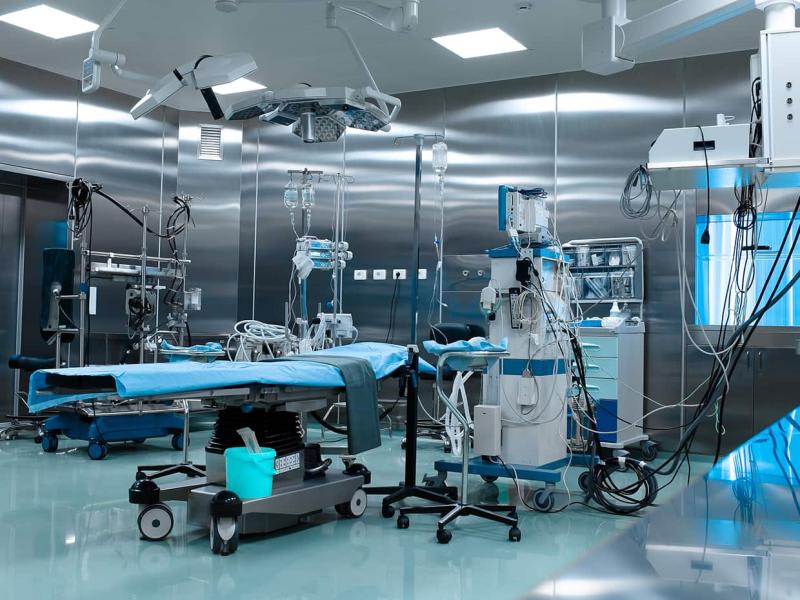Key takeaways:
The manufacturing and engineering sector continues to demonstrate its resilience in the face of a complex global market, with robust M&A activity underscoring its adaptability. Over the last six months, the sector has experienced growth driven by strategic investment priorities and rising interest in key subsectors. Insights from RSM experts provide valuable perspectives on the trends, challenges, and opportunities shaping the landscape in 2025.
Drivers of M&A activity
Recent M&A activity has been shaped by strategic decision-making rather than macroeconomic trends. “Development is strongly impacted by the specific sectors in which the customers are active,” explains Dr. Nils Mengen, Partner at RSM in Germany. “Corporate buyers are acting more strategically rather than being purely driven by broad economic trends.”
One standout area is engineering services. Phil Parkes, Partner at RSM in the UK, notes that, “The engineering services subsector has been extremely active, reflecting strong demand for infrastructure, energy transition, and digital transformation capabilities.” This focus is further strengthened by reshoring and onshoring strategies, which geopolitical challenges have accelerated. These trends are creating more acquisition opportunities for players with domestic capabilities, enabling them to respond to shifting market dynamics.
Although activity is high, several obstacles are tempering deal-making sentiment. Rising wage inflation, labour shortages, and increasing input costs are putting pressure on margins. “Global economic uncertainty, tariff discussions, and overall instability continue to impact investments,” says Dr. Mengen.
Valuation gaps remain another key challenge. Freek van der Linden, Director at RSM in Netherlands, highlights that, “Valuation gaps are still there, especially if current trading does not show the increases needed to confirm high-growth expectations.” Ensuring the alignment of buyer and seller expectations has therefore become increasingly important for moving transactions forward.
Subsector opportunities and the role of private equity
High-growth subsectors attract attention
Key subsectors, including healthcare and energy transition, continue to drive deal-making activity, especially from private equity (PE) backed investments. According to van der Linden, “Healthcare is seeing increased deal levels compared to prior years, all the while the energy transition subsector is also gaining more attention; however, a noteworthy increase in deal volumes is yet to be seen for the latter.”
Parkes also points to high-end precision engineering as a growing focus. “High-end precision engineering or manufacturing is featuring more in UK-specific transactions, particularly within the aerospace and defence industries,” he notes, indicating an increasing appetite for niche, high-value sectors that prioritise innovation and specialised expertise.
Private equity fuels growth
PE remains a key driver in the sector’s M&A activity, providing much-needed capital to support transactions. “Yes, there remains a robust pool of capital from both private equity and strategic investors, particularly in specialist manufacturing, healthcare, aerospace, and defence sectors,” says Parkes.
“So far in 2025, corporates have been particularly busy transacting as part of their buy and build strategies, with service and product diversification opportunities supplementing core service offering expansion,” Parkes adds. He notes that we are also seeing an increase in the number of PE backers that are taking a more proactive interest in the sector than they have in the last few years.
Managing external challenges
Disruptions within global supply chains remain a pressing issue. Many businesses are adapting by diversifying their sourcing strategies and securing bulk purchasing agreements to build supply chain resilience. “Sourcing from multiple parties and frontloading material sourcing have been key strategies,” explains van der Linden.
However, such measures are not without trade-offs. “Whilst it addresses supply chain volatility, purchasing early and seeking bulk discounts locks up working capital,” Parkes advises.
Energy prices and labour costs, though less severe than in previous years, continue to impact particular regions. “UK energy prices remain high compared to many other countries,” Parkes observes. Meanwhile, Dr. Mengen highlights positive measures within Germany aimed at alleviating energy costs, stating, “Politicians are initiating steps to lower energy prices, as they remain higher than in other European countries.”
Outlook for the rest of 2025
The second half of 2025 holds promising potential for M&A activity in the manufacturing and engineering sector. “For the next three months, I see a very high level of activity with no indications that this will slow in the second half of the year,” Dr. Mengen predicts.
Investor confidence is expected to grow, with particular interest in high-growth subsectors such as healthcare, specialist manufacturing, and energy transition. “We’re seeing increased appetite on the investor side, which is ultimately applicable across different industries,” adds van der Linden.
With private equity maintaining its strong interest and businesses continuing to focus on operational improvements, the sector’s resilience and adaptability will likely sustain its momentum through the remainder of the year.
The manufacturing and engineering sector remains a fertile ground for dealmakers within the M&A landscape. By focusing on strategic investments, operational resilience, and key growth subsectors, businesses within this industry are well-positioned to capitalise on emerging trends and maintain their competitive edge.







